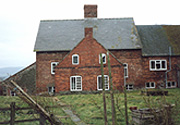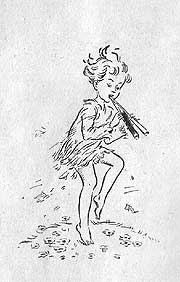
The Pigsticker
During World War II, the Roberts family at Aston Pigott were allowed to kill two pigs a year for their own use. Unlike today, killing the pig and preparing the meat was all done at home.
'We were allowed to kill two pigs a year for our own use and so it would be salted. It was rather fattier than the pork or bacon or any of those things now. I didn't particularly like all that rather fatty bacon. But when you killed a pig you shared it - you couldn't eat it all at once, of course, so your neighbours would get joints of pork and they would give you a joint when they killed their pigs as well. Not the whole year, because you would only kill pigs when it was in cold months, you wouldn't kill them in the middle of summer.
The killing was done on the farm and I can still remember the pigsticker - he'd done it for years. I think that perhaps a little bit later, but not much, they were supposed to kill them in what was considered a humane way, but there was a feeling that he knew how to kill them best. ...It was a bit frightening I have to say...I don't remember seeing them, but I still remember that there was a lot of squealing as they moved the pig. And then it would be hung up in the back kitchen...and there was a beam and a wooden frame, almost like a yoke I suppose. It would be hung up there, probably for a week of so, while the saltpetre was being rubbed in...no the saltpetre came later. Having been killed, it was first of all hung up there by the back legs and then it was scraped , I think with boiling water, and the tough bristles were sort of scraped off. I remember the pig seemed very big - much bigger than the pig carcasses you see today. I suppose it was because it was hanging right there in the scullery.'
'You heard the pig squealing but you never went and looked'
 |
 |
 |
